The Sagrada Familia, an iconic symbol of Barcelona, has captivated millions with its unique architectural style and profound spiritual significance. Its construction, which began in 1882, was driven by a vision that transcended mere aesthetics, aiming to create a sacred space that embodies the harmony between nature and faith.
In exploring the motivations and inspirations behind this monumental project, we uncover the intricate layers of meaning that resonate throughout its design. This leads us to the question at the heart of the discussion: Why Sagrada Familia Was Built: Unveiling the Secrets Behind Gaudí's Masterpiece, a journey that reveals not only the genius of Antoni Gaudí but also the cultural and religious aspirations of his time.
The Historical Context of the Sagrada Familia's Construction
The construction of the Sagrada Familia took place during a period marked by significant social and political changes in Spain. The late 19th century was a time of industrialization and modernization, with Barcelona emerging as a cultural hub. This backdrop influenced Gaudí’s vision, as he sought to create a monumental structure that would reflect the spiritual aspirations of the era while also incorporating innovative architectural techniques.
Gaudí was deeply inspired by religious fervor and the rise of Catholicism during this period. The Sagrada Familia was not just a church but a representation of the evolving spiritual landscape. The project was commissioned by a local bookseller, Josep Maria Bocabella, who envisioned a temple dedicated to the Holy Family, thus intertwining faith with civic identity. This ambition resonated with the public, drawing in support and funding from various sectors of society.
In addition to religious motivations, the construction of the Sagrada Familia also coincided with the Catalan Modernisme movement, which sought to establish a distinct architectural style that celebrated regional identity. This movement emphasized organic forms and intricate details, which Gaudí masterfully integrated into his design. The interplay between tradition and innovation in the Sagrada Familia exemplifies how architecture can serve as a dialogue between past and present.
The following table highlights key historical milestones in the construction of the Sagrada Familia:
| Year | Event |
|---|---|
| 1882 | Foundation stone laid by Francesc de Paula del Villar |
| 1883 | Gaudí takes over as chief architect |
| 1926 | Gaudí dies in a tragic accident, leaving the project unfinished |
| 2026 | Anticipated completion date, marking 100 years since Gaudí's death |
Gaudí's Vision: The Architectural Significance of the Sagrada Familia
Gaudí's vision for the Sagrada Familia extends beyond traditional church architecture, as he sought to create a harmonious blend of nature and spirituality. His designs are characterized by organic shapes, vibrant colors, and intricate details that evoke the natural world. Gaudí believed that architecture should reflect the environment, and he drew inspiration from geometric forms found in plants and animals, which can be seen in the structure's flowing lines and unique structural elements.
The architectural significance of the Sagrada Familia lies in its innovative use of materials and construction techniques. Gaudí implemented a revolutionary approach to structural design, utilizing catenary arches and hyperboloid structures to distribute weight more efficiently. This not only provided strength but also allowed for the creation of soaring columns that mimic tree trunks, reinforcing the connection between the building and the natural landscape. These techniques have influenced modern architecture, making the Sagrada Familia a pioneering example of engineering prowess.
Furthermore, the Sagrada Familia serves as a testament to Gaudí's deep-rooted spiritual beliefs. Each façade and interior space is imbued with symbolic meaning, reflecting biblical stories and the teachings of Christianity. For instance, the Nativity façade celebrates the birth of Christ, while the Passion façade represents his crucifixion. This attention to spiritual narrative transforms the architecture into a living sermon, inviting visitors to engage with the divine through the physical structure.
In summary, Gaudí's vision encompasses not only striking aesthetics but also profound messages intertwined with innovative architectural methods. The Sagrada Familia is a remarkable achievement that continues to be a source of inspiration for architects and visitors alike, showcasing how architecture can transcend its physical form to embody deep spiritual and cultural significance.
Exploring the Symbolism Behind the Sagrada Familia's Design Elements
The design elements of the Sagrada Familia are rich in symbolism, reflecting Gaudí's profound understanding of both nature and spirituality. Each aspect of the church serves a dual purpose: aesthetic beauty and a narrative that conveys the teachings of Christianity. Gaudí intricately wove biblical stories into the very fabric of the architecture, inviting contemplation and reverence from visitors.
Among the notable symbols embedded within the structure are:
- Tree-like Columns: Mimicking nature, these columns support the weight of the roof, reminiscent of a forest and symbolizing growth and life.
- Façades: Each façade tells a different part of Christ's life, with the Nativity façade celebrating his birth and the Passion façade illustrating his suffering and resurrection.
- Geometric Patterns: The use of geometric forms reflects the divine order in nature, emphasizing Gaudí's belief in the harmony between creation and spirituality.
Furthermore, the interplay of light and color within the Sagrada Familia amplifies its spiritual aura. The stained glass windows filter sunlight into vibrant hues, casting colorful shadows that transform the interior space. This effect not only enhances the visual experience but also serves as a metaphor for divine illumination, leading the faithful towards spiritual enlightenment.
Ultimately, the Sagrada Familia stands as a testament to Gaudí's innovative genius, where every design choice is imbued with meaning. The church serves not merely as a place of worship but as a living representation of faith, inviting all who enter to explore the profound connections between nature, architecture, and spirituality.
The Role of Religion in the Sagrada Familia's Purpose and Meaning
The Sagrada Familia serves as a profound expression of religious devotion, with its very purpose rooted in the Christian faith. Gaudí envisioned the basilica as a temple dedicated to the Holy Family, embodying the principles of love, family, and spirituality. This central theme is reflected in the architectural elements, where every detail narrates a biblical story, inviting worshippers and visitors alike to engage in a deeper spiritual journey.
Moreover, the design of the Sagrada Familia is a physical manifestation of catholic theology and symbolism. Gaudí believed that architecture should serve as a form of prayer, and he incorporated elements that highlight crucial aspects of Christianity, such as the Holy Trinity and the life of Christ. Through ornate façades and intricate sculptures, the structure becomes a living testament to the beliefs and values of the faith it represents.
The interplay between light and structure within the basilica further enhances its spiritual significance. Stained glass windows are not just decorative; they illuminate the interior with colors that evoke feelings of peace and reverence. As sunlight filters through these windows, it creates an atmosphere that encourages reflection and connection with the divine, aligning perfectly with Gaudí's vision of a sacred space that transcends the mundane.
In essence, the Sagrada Familia is not merely an architectural wonder but a sacred sanctuary that encapsulates the heart of Christian belief. Each aspect of its design—from the towering spires to the intricate details—serves a purpose, drawing people closer to their faith and illustrating the profound relationship between architecture and spirituality.
Unraveling Gaudí's Artistic Techniques in the Sagrada Familia
Antoni Gaudí's artistic techniques in the Sagrada Familia reflect his unique approach to architecture, where he seamlessly integrated natural forms and innovative structural solutions. One of his key methods was the use of catenary arches, which allowed him to create visually striking forms while ensuring structural stability. These arches, inspired by the natural curves of hanging chains, can be seen throughout the basilica, contributing to both its aesthetic appeal and its enduring strength.
Another significant technique employed by Gaudí is the exploration of color and light. He meticulously designed the stained glass windows to filter sunlight, producing a kaleidoscope of colors that transform the interior ambiance. This technique not only enhances the spiritual experience but also symbolizes the divine presence, inviting visitors to reflect on their own spirituality within the vibrant light-filled space.
Moreover, Gaudí utilized geometric patterns derived from nature, which are evident in various elements of the structure. These patterns are not merely decorative; they serve to illustrate the underlying mathematical and harmonic principles that govern the universe. By embedding these principles into his designs, Gaudí created a profound connection between art, science, and spirituality, making the Sagrada Familia a testament to his visionary genius.
Finally, Gaudí's use of organic materials further emphasizes his commitment to aligning his architectural vision with the natural world. He often incorporated locally sourced stone and other elements that not only harmonize with the surrounding environment but also tell a story of craftsmanship and tradition. This approach highlights Gaudí's belief that architecture should evolve organically, reflecting the essence of the place and its people.
The Future of the Sagrada Familia: Ongoing Construction and Legacy
The future of the Sagrada Familia is a topic of great anticipation as construction continues towards its completion, expected in 2026, coinciding with the centenary of Gaudí's death. This ongoing project not only aims to finalize Gaudí's original vision but also to adapt to modern architectural practices and sustainability standards. The integration of contemporary technologies in construction holds the potential to transform how we perceive historic structures while preserving their cultural significance.
As the Sagrada Familia progresses, it serves as a beacon of cultural legacy and artistic expression. The project has garnered global recognition, inspiring a new generation of architects and artisans who are committed to maintaining Gaudí's ethos. Key aspects of the ongoing construction include:
- Innovative Techniques: The use of advanced modeling software enables precise replication of Gaudí's intricate designs.
- Sustainability Initiatives: Efforts to utilize eco-friendly materials and energy-efficient systems are being prioritized.
- Community Engagement: Local citizens and visitors continue to support the project through donations and participation in workshops.
In looking ahead, the Sagrada Familia is poised to become not only a completed architectural masterpiece but also a vibrant center for spiritual and cultural exchange. Once finished, it will stand as a testament to the enduring impact of Gaudí's vision, fostering a deeper connection among visitors to the interplay between faith, nature, and art. This legacy will continue to evolve, inviting generations to explore its rich narrative and significance in the modern world.
Moreover, the construction's progression is meticulously documented and shared with the public, enhancing transparency and excitement. The Sagrada Familia is not merely a destination; it is a living project that evolves alongside societal changes, ensuring its relevance and importance for years to come. As such, the future of the Sagrada Familia symbolizes a harmonious blend of history and innovation, promising a legacy that resonates with both tradition and contemporary values.
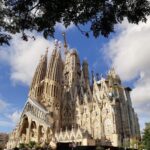 Exploring the Magnificent Sagrada Familia: Opening Hours and Must-See Highlights in Barcelona
Exploring the Magnificent Sagrada Familia: Opening Hours and Must-See Highlights in Barcelona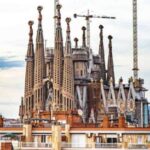 Exploring the Gothic Wonder: From Sagrada Familia to Barcelona Airport
Exploring the Gothic Wonder: From Sagrada Familia to Barcelona AirportIf you want to know other articles similar to Why Sagrada Familia Was Built: Unveiling the Secrets Behind Gaudí's Masterpiece you can visit the category Blog.
Leave a Reply

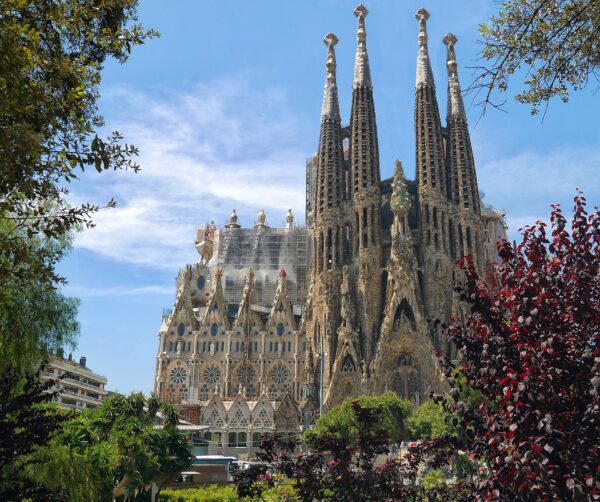
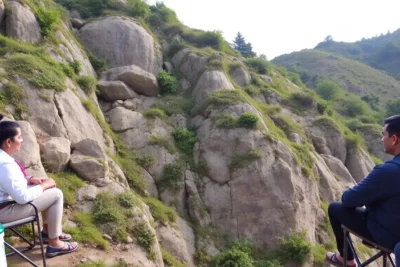




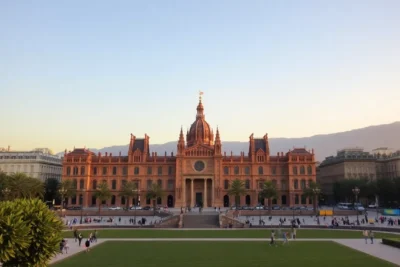

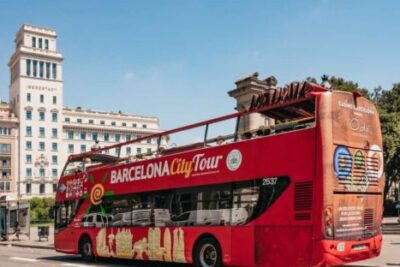
Read more!